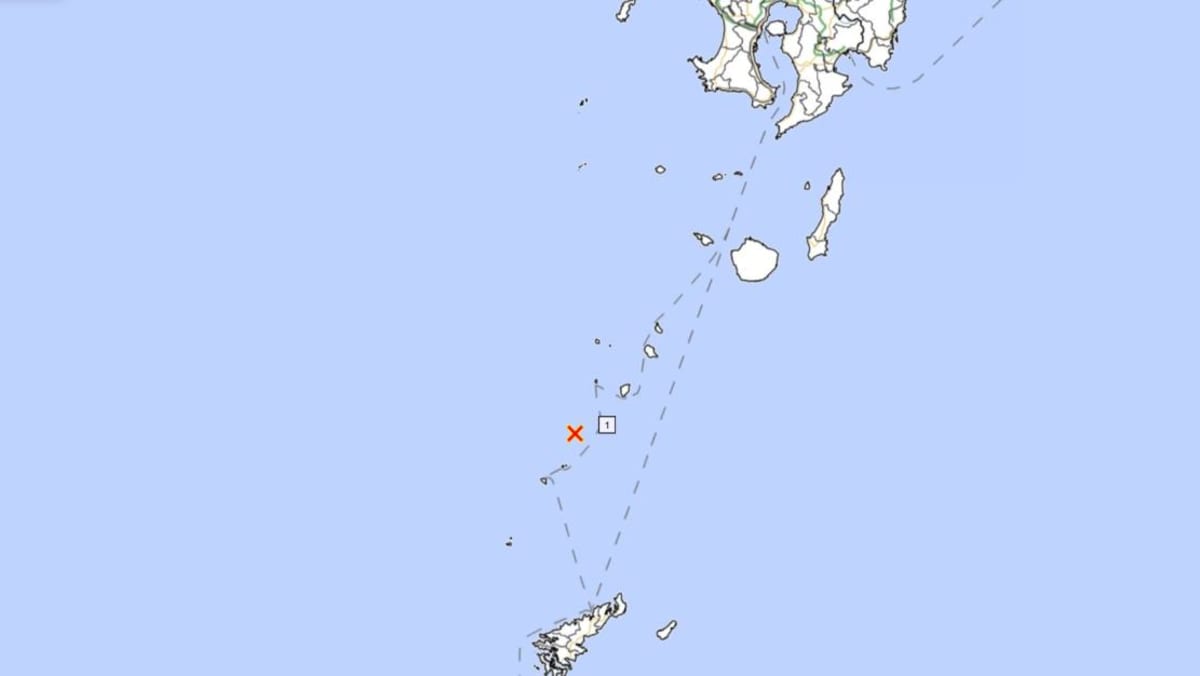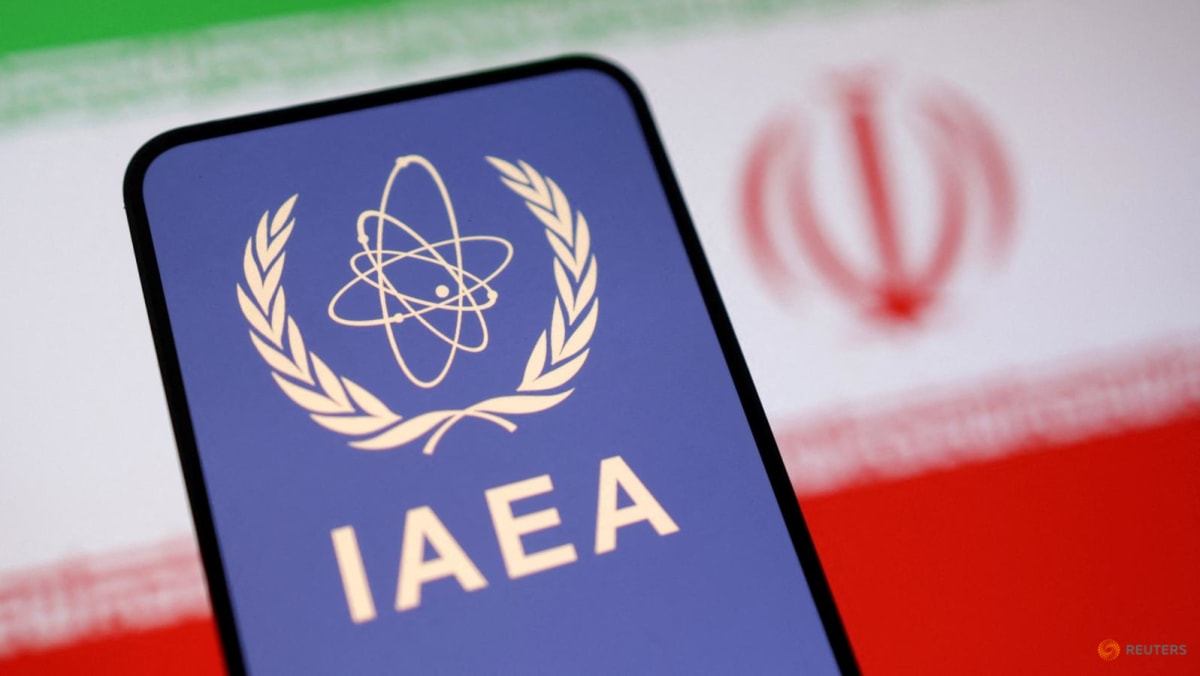Geothermal energy, a clean and renewable source of energy from the ground, could reduce Singapore’s reliance on fossil fuels.
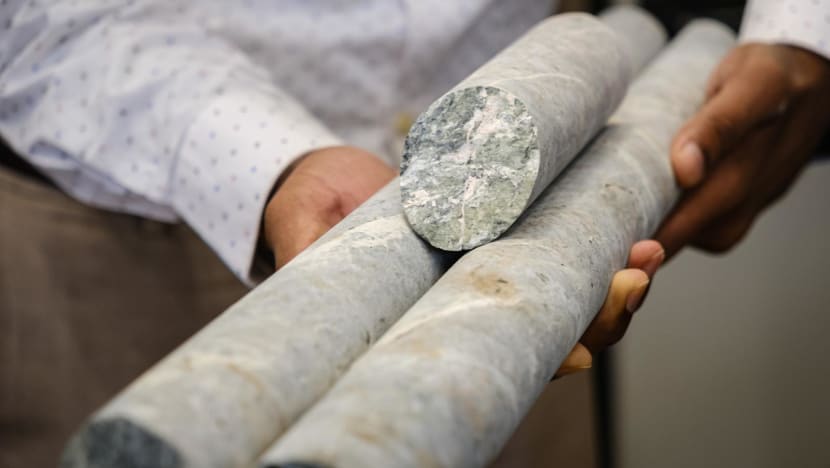
Granite rock core samples obtained from 1,600m below ground at the Sembawang site. (Photo: NTU)
New: You can now listen to articles. 
This audio is generated by an AI tool.
03 Jul 2025 08:42PM (Updated: 03 Jul 2025 11:15PM)
SINGAPORE: At a small plot of land just 600m from Sembawang Hot Spring, researchers have found subsurface temperatures of 122 degrees Celsius - the highest recorded in Singapore to date.
Measured at a depth of about 1.76km, the discovery surpassed earlier findings in Admiralty, where a temperature of 70 degrees Celsius was detected at a depth of 1.12km in 2022.
Dr Jonathan Poh, a research fellow at the Energy Research Institute @ NTU (Nanyang Technological University), described the discovery as a “huge milestone” in Singapore’s geothermal exploration efforts.
The data will contribute to geothermal feasibility studies, fuelling the possibility of harnessing geothermal energy as a future energy source. Currently, about 95 per cent of Singapore's energy is generated by burning natural gas, a fossil fuel.
Geothermal energy, derived from heat stored beneath the Earth’s surface, is a renewable resource that can be tapped for applications such as cooling and industrial heating, the researchers said.
The study was led by around 15 researchers from NTU and TUMCREATE, in collaboration with Surbana Jurong.
TUMCREATE is a research platform involving the Technical University of Munich, other universities, public agencies and industry partners.
The findings were part of a national study supported by the National Research Foundation and the Energy Market Authority (EMA).
Four researchers from the team sat down with members of the media on Thursday (Jun 3) to share insights from their findings.
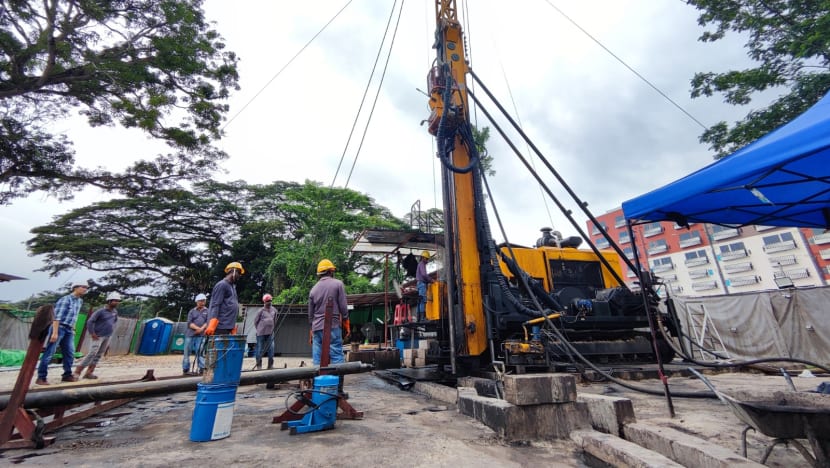
When the researchers were exploring geothermal energy in Singapore, their initial plan was to drill several shallow wells at different parts of the country to identify potential sites.
However, they noticed that the northern region tended to be hotter. Based on their analysis, heat flow at the northern part of Singapore is at least twice the global continental average, despite Singapore not being situated in a volcanic region.
To identify suitable drilling sites, the team considered several criteria. First, the locations needed to have good road access and around 1,600 square metres of open space.
The sites also had to be some distance from the hot spring and faults in the Earth’s surface.
Given Singapore’s limited land availability, the researchers said the sites in Admiralty and Sembawang eventually met all the requirements.
Both sites sit on Simpang granite, a type of rock with a high concentration of naturally occurring heat-generating elements, making it ideal for harnessing geothermal energy.
“If there is a thick crust full of this type of granite, it can possibly contribute up to about 40 per cent of the total heat flow measured at the surface,” said Dr Poh.
Using current data, the researchers found that there is potential for temperatures to reach 230 degrees Celsius 5km deep - well above the minimum of 150 degrees Celsius typically needed for generating electricity.
The researchers are now exploring different heat extraction technologies that could be used in Singapore.
“In Singapore, as we are not sitting on a volcano or near a volcano zone, we need this kind of newly developed systems which allow us to extract heat,” said Mr Anurag Chidire, a research associate at TUMCREATE.
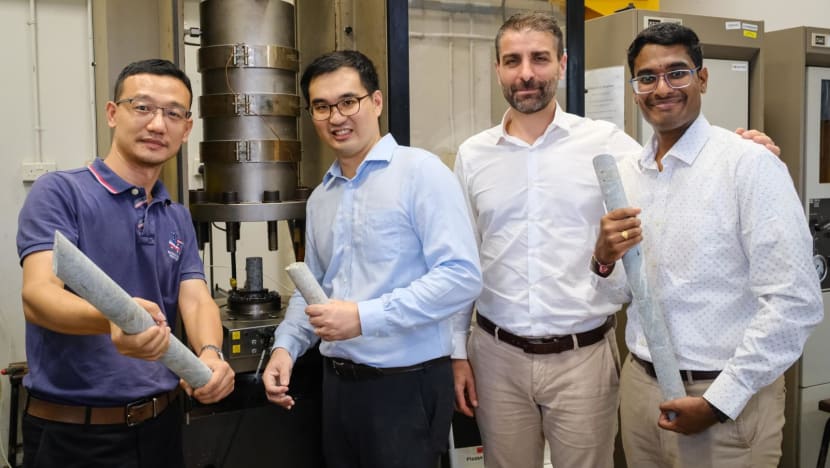
As Singapore works towards its net-zero emissions target by 2050, geothermal energy is emerging as a compelling option, the researchers said.
To evaluate potential cost savings using both systems, researchers modelled and simulated their application in electricity generation and chilled water production used in Singapore’s district cooling system.
In one simulation, electricity generation costs were reduced by at least 38 per cent, while chilled water costs dropped by 39 per cent.
Geothermal energy could also potentially bring cost savings and reduce greenhouse gas emissions by at least 90 per cent, the researchers found.
“Singapore is prudent enough to know that they want to diversify their electricity mix in future. They do not want to go only with 100 per cent imports, or go only with hydrogen, or only solar,” said Mr Chidire, noting that solar power is limited.
“That is the reason why geothermal can play an important role in the diversification of Singapore's electricity, by enhancing the security and aligning with all the environmental cost aspects.”
Dr Poh said the new data has motivated the EMA to launch a geophysical survey, which will provide the researchers with a baseline understanding of Singapore’s subsurface and identify other areas with geothermal potential.
For now, they are awaiting the outcome of the geophysical study, which is likely to be released at the end of 2026.
The researchers are also trying to engage with other countries to support their geothermal work, he added.
Professor Alessandro Ramognoli, who leads the joint research team, added that current data is already “quite compelling”.
“From our side, what we are working on is to see whether we can bring together the public sector, together with the private sector, to go for a pilot demonstration plan,” he said, adding that the pilot demonstration will help them study what it entails to actually deploy geothermal energy.
“Rather than keep studying and doing desktop studies, that's what we should do next,” he said.
